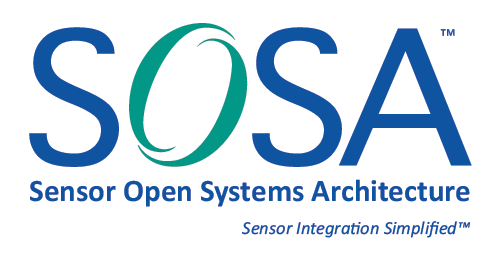
SOSA™ stand for Sensor Open Systems Architecture™.
The SOSA™ standard is of paramount importance in the field of weapons and defense systems, because of its ability to meet the growing need for flexibility, interoperability and rapid adaptation to contemporary global security challenges. It offers an open, modular and standardized architecture, enabling system developers to rapidly integrate new components and functionalities, while reducing development costs and times.
What is the SOSA™ standard?
The Sensor Open Systems Architecture™ (SOSA™) standard represents an emerging standard in the field of weapons and defense systems, defining an open, modular architecture for sensor systems. At its roots, the SOSA concept emerged from the need to rapidly adapt military products and systems to evolving threats and technologies, while reducing development costs and timescales. The SOSA™ architecture is made up of different components and layers, ranging from hardware interfaces to software and standardized data interfaces. This architecture favors modularity, enabling easy integration of new modules and reuse of existing components. In addition, by promoting interoperability between the various elements of the system, the SOSA™ standard enables fluid and efficient communication between sensors, processors and data processing systems.
What are the objectives and benefits of SOSA™?
Fundamentally, the SOSA™ standard aims to promote an open, standardized approach to sensor systems, enabling faster, cheaper and more flexible integration of components and functionalities. By adopting SOSA™, system developers can benefit from reduced development and integration costs, as well as accelerated development cycles thanks to the reuse of standards-certified components. For end-users, such as armed forces, the benefits include greater interoperability between different systems, and an enhanced ability to rapidly upgrade and adapt sensor system capabilities to meet changing operational needs.
As a company specializing in embedded systems and mission-critical software, apissys takes advantage of the standardization and modularity offered by SOSA™ to accelerate the development of its solutions, reduce development and maintenance costs, and offer more flexible and interoperable products and services to its defense customers.
What does SOSA™ stand for in the military?
This open, standardized SOSA™ architecture has wide-ranging applications in a variety of fields, including combat aircraft, UAVs, land vehicles, ships and land defense systems. By adopting the SOSA™ standard, armed forces can benefit from increased interoperability between different sensor systems, facilitating the exchange of critical information in real time and improving situational awareness on the battlefield. In addition, standard SOSA™ allows greater flexibility in configuring and updating sensor systems, enabling the military to adapt quickly to changing operational requirements and fully exploit technological advances to maintain their tactical advantage. In short, SOSA™ represents an essential pillar for the modernization and interoperability of military forces in the age of information warfare and advanced technology.
What are the differences between openVPX and SOSA™?
OpenVPX and SOSA™ are both standards used in embedded and defense systems, but they differ significantly in their objectives, scope and architecture.
OpenVPX is an industry standard focused primarily on specifying board formats, connectors and backplanes for embedded signal processing systems. It aims to promote interoperability between electronic modules in a chassis or platform, while offering flexibility in system design and integration.
In contrast, SOSA™ (Sensor Open Systems Architecture) broadens the scope by defining an open, modular architecture not only for electronic boards, but for all sensor systems, including software interfaces and communication protocols. SOSA™ aims to promote the reusability, modularity and interoperability of sensor systems across a wide range of military platforms, while addressing changing operational requirements and accelerating the development and integration of sensor capabilities.
In summary, while OpenVPX and SOSA™ share certain aspects related to interoperability and standardization, SOSA™ stands out for its broader scope and specific focus on sensor systems in the defense field.
To conclude, the SOSA™ standard represents a major advance in the defense and security field, offering an open, modular and standardized architecture for sensor systems. By promoting system reusability, interoperability and flexibility, the SOSA™ standard meets the changing needs of armed forces and security players, while accelerating the development and integration of sensor capabilities. By adopting SOSA™ embedded systems based on SOSA™ , companies and military organizations can benefit from significant improvements in operational efficiency, industry competitiveness and national security.
- The AV153, fully aligned with the SOSA™ standard
- The AV151, aligned with both OpenVPX and SOSA™
